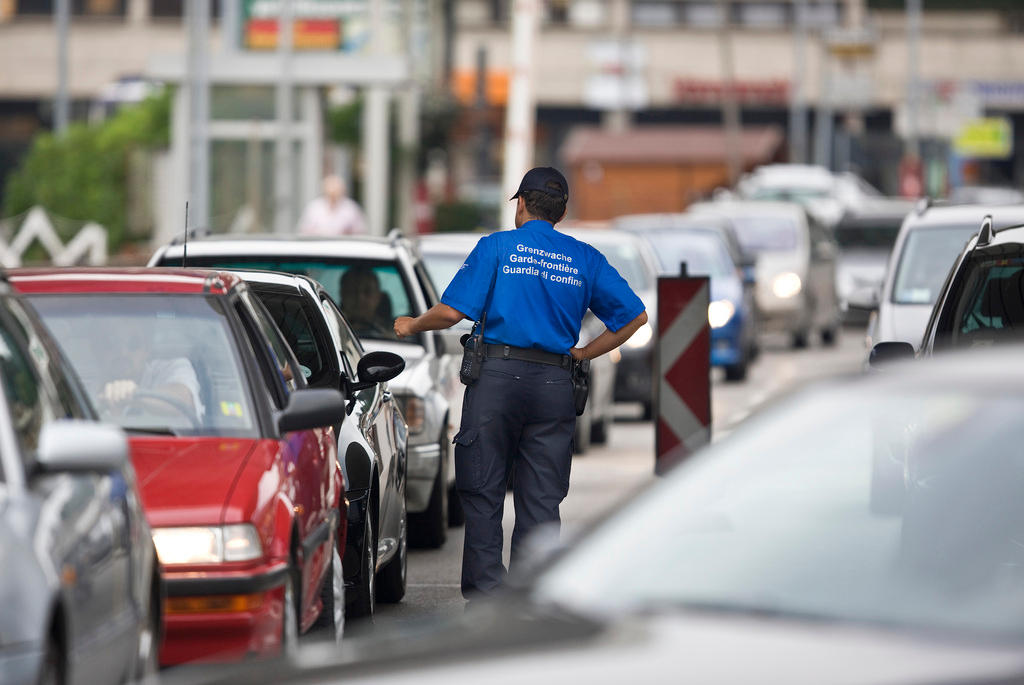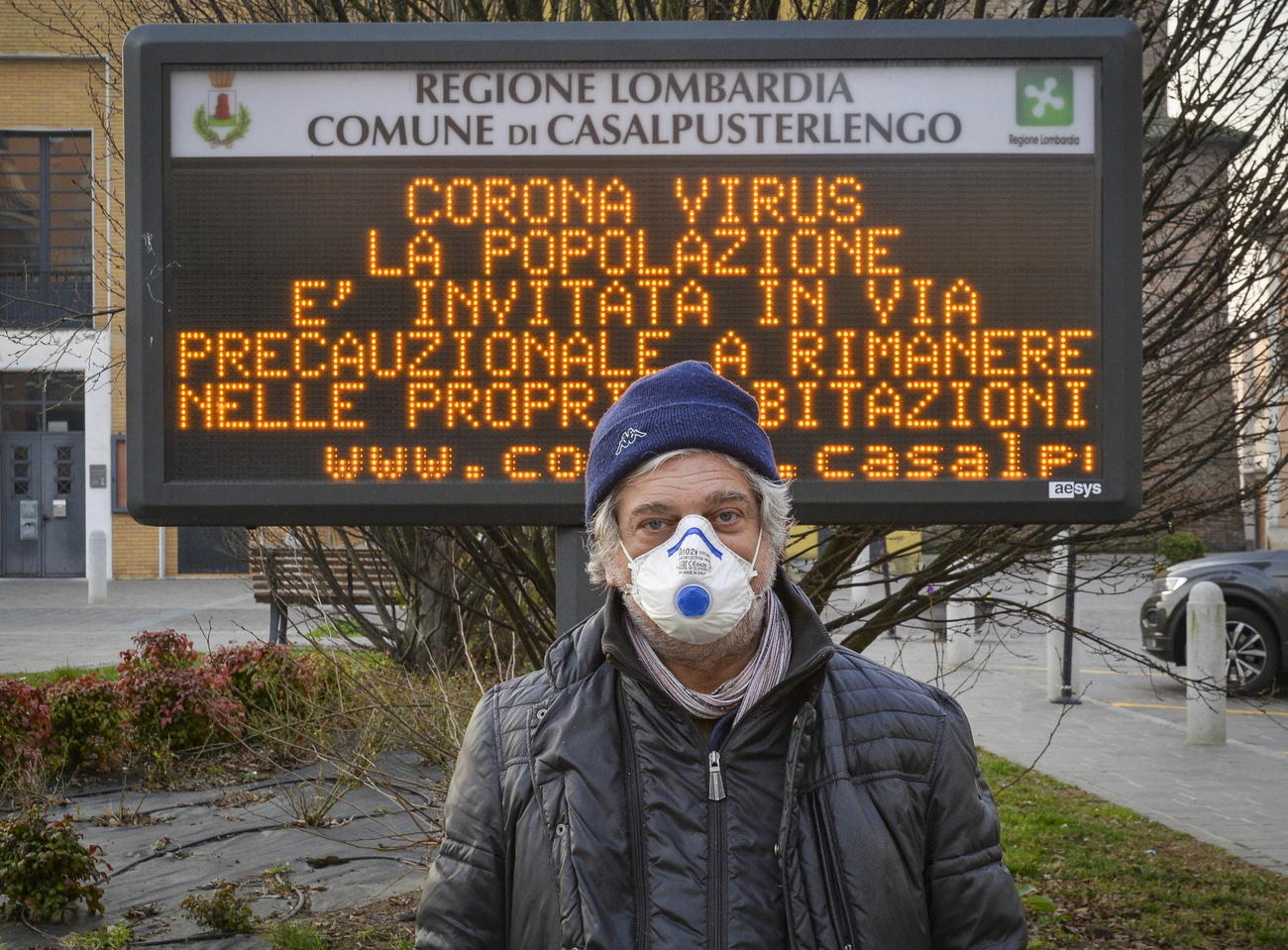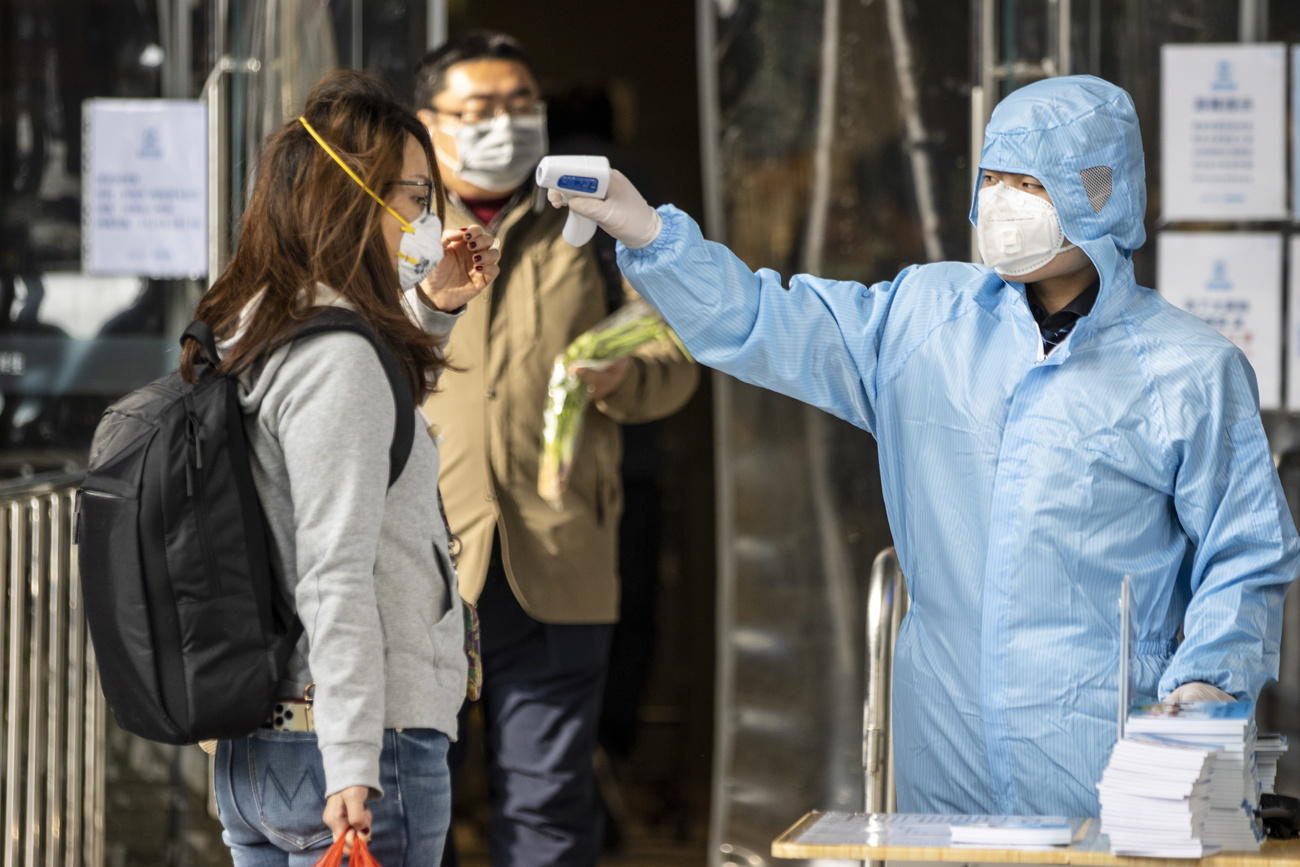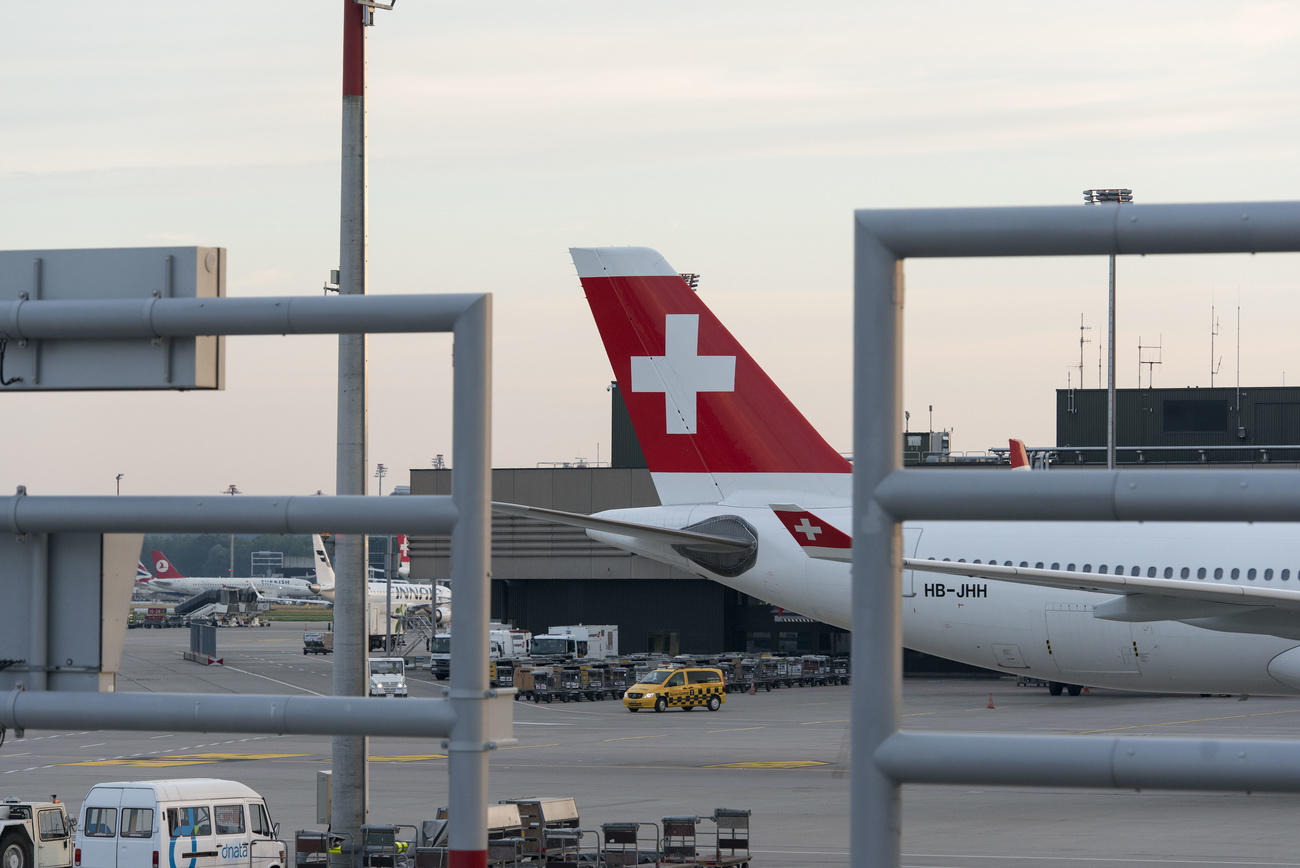Coronavirus: Ticino and its cross-border workers from Italy

The southern Swiss canton of Ticino is just a few kilometres from the main hotbeds of the COVID-19 coronavirus in Italy. More than a quarter of the cantonal workforce commutes from Italy every day, and some locals want the federal government to close the border.
Why could the virus soon arrive in canton Ticino?
The Ticino border is just a hundred kilometres or so from the municipality of Lodi, the epicentre of COVID-19 in Italy. With its road and rail tunnels under the Gotthard massif, Ticino is the main Alpine transit route between Italy and central and northern Europe.
But when it comes to the risk of contagion, transit passengers are less of a worry for the canton than the 67,800 Italian cross-border workers who come into close contact with the local population on a daily basis. Most of these commuters come from Lombardy, the Italian region most affected by the coronavirus.
So far about 300 suspected cases of COVID-19 have been investigated in Switzerland but all have tested negative, Home Affairs Minister Alain Berset said on Monday. However, the virus has been contracted by some Swiss travellers in Asia, who were then placed in quarantine.
Is there an argument for shutting the border?
Closing the border between Italy and Ticino is a decision for the Swiss federal authorities. However, the government doesn’t intend to take such a measure, which was recently demanded by representatives of the right-wing protest movement Lega dei Ticinesi.
The Federal Office of Public HealthExternal link says the situation in northern Italy is worrying, but these are local outbreaks and it’s still too early to speak of a wave [of cases] engulfing Switzerland.
On the other hand, in the event of an actual outbreak in Europe, it would be impossible to stop the spread of the virus with such measures since the continent is too closely interconnected. France and Austria have also kept their borders with Italy open, although Austria temporarily halted cross-border rail traffic.
Why can’t the Ticino economy do without cross-border workers?
More than 67,800 cross-border commuters work in Ticino and their number has doubled since 2002, i.e. since the introduction of the agreement on the free movement of persons between Switzerland and the European Union. Only canton Geneva employs more people who cross the border every day (87,104). This is followed by Basel City (33,932) and Vaud (32,425).
Cross-border commuters account for more than a quarter of the total workforce in Ticino. Whereas cross-border workers traditionally worked mainly in construction and industry, today almost two-thirds are active in the tertiary sector (services).
In practice, cross-border workers are now present in every branch of the economy, including the public sector. Closing the border therefore risks paralysing a large part of the Ticino economy, jeopardising many basic services for the population. Among the sectors most affected would be the hospital sector: about half of the nursing staff are foreign and a fifth are cross-border workers.
Reaction and measures in Italy
The federal health office saysExternal link the coronavirus epidemic probably originated at a market in the central Chinese city of Wuhan where bats, snakes and other wild animals were traded in addition to fish. More than 80,000 cases of the new coronavirus, known as COVID-19, have been reported throughout the world; 2,701 people have died, of whom 38 were outside mainland China.
Europe’s biggest outbreak is in Italy, with more than 230 infections and seven deaths. All seven victims were elderly and had pre-existing medical conditions.
In northern Italy, authorities sealed off the worst-affected towns and banned public gatherings across a wide area, halting the carnival in Venice, where there were two cases. Shops are shut, bars are closed and people speak to each other from a safe distance.
The majority of those known to be infected with COVID-19 hail from two main clusters: some ten towns in Lombardy and another area in the neighbouring region of Veneto.
Officials still haven’t pinpointed the origin of Italy’s outbreak or whether the clusters were related. With the numbers rising, authorities were struggling to contain the number of cases, which by Monday had spread to a half-dozen regions and prompted Austria to temporarily halt rail traffic across its border with Italy.

More
Health authorities monitor COVID-19 in Italy
(Translated from Italian by Thomas Stephens)

In compliance with the JTI standards
More: SWI swissinfo.ch certified by the Journalism Trust Initiative





You can find an overview of ongoing debates with our journalists here. Please join us!
If you want to start a conversation about a topic raised in this article or want to report factual errors, email us at english@swissinfo.ch.